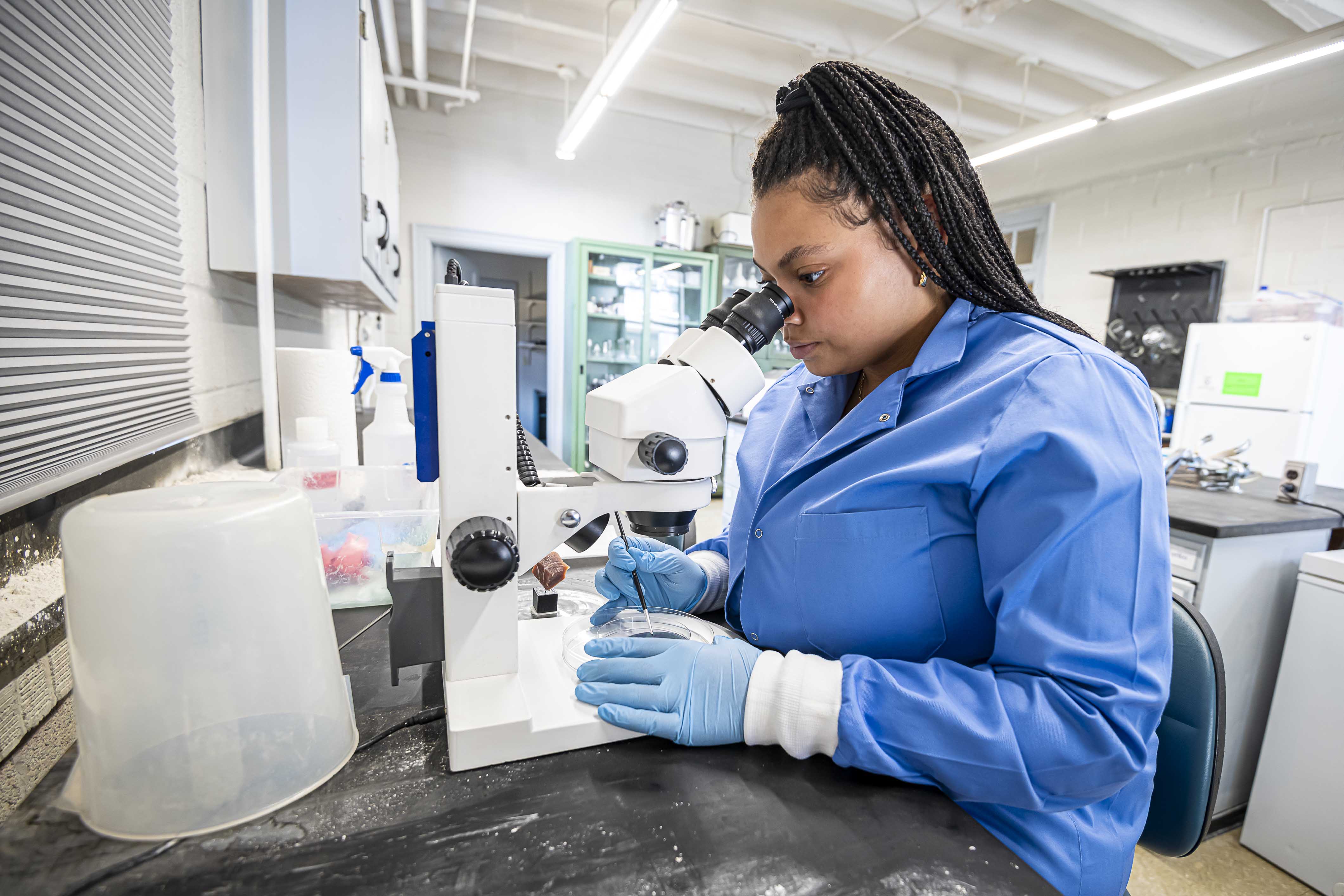The information presented on this page may be dated. It may refer to situations which have changed or people who are no longer affiliated with the university. It is archived as part of Mississippi State University's history.
Morgan Mosby, a senior agricultural science major from Natchez, Mississippi, has always loved nature. Growing up, she enjoyed learning about plants and being outside. Mosby graduated from the Natchez Early College Academy, where she finished high school with her associate degree. While there, she knew that she wanted to earn her bachelor's degree from Mississippi State University.
"Mississippi State was the only college I applied to because I knew this is where I wanted to be. I was accepted to MSU early in my senior year, so I knew I made the right choice," she said.
She began working at the Sensory Evaluation Lab as a sophomore.
"I've been working here over two years now, and I've learned so much," she said.
Mosby chose to major in agricultural science because she enjoys learning about food production.
"Both my classes and job at the Sensory Evaluation Lab allow me to explore my interests in food and the outdoors together. I've learned where food comes from, how it grows, and why it's important. I've also been able to educate other people on what I have learned, which has been my favorite part," she said
Mosby is conducting research in the lab measuring the mortality rate of ham mites on dry-cured ham using UV-C lights. Ultraviolet radiation, specifically shortwave type C, shows promise as a physical means to control mite infestations on dry-cured ham. In her study, three treatments of complete darkness, LED light, and UV-C light were placed in three chambers and lined with aluminum foil to ensure uniform light reflection. Fifty adult, mixed-sex ham mites were then inoculated onto ham cubes, and each of the cubes were carefully placed directly under the light treatment.
In the experiment, UV-C treatment resulted in a 74% mortality rate, which was the highest rate compared to the other variations of treatment, LED (29%), and the darkness treatment (27%). This suggests that UV-C lighting is a possible tool for pest management in the dry-cured ham industry. Future studies will optimize UV-C lighting intensity, distance to the sample, and exposure times, in hopes of achieving higher efficacy in controlling ham mite infestations.
"Throughout my research, I've learned organization skills, as I had to be very detail-oriented throughout this project to get the correct data from my research. I've also learned communication skills and time-management, as there are so many moving parts within any research project," she said.
Mosby plans to graduate in December 2024 and hopes to get an internship with the USDA's Natural Resources Conservation Service.
"My ultimate goal is to work for an agency, like the USDA, focused on the growing side of things, engaged in something like urban agriculture," she said.
Mosby plans to carry what she's learned from her classes, job, and her research project with her into her career.
This research is funded by the Mississippi Agricultural and Forestry Experiment Station.

